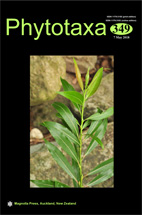Abstract
Gastrodia Brown (1810: 330; Gastrodieae, Epidendroideae) is a genus of holomycoheterotrophic orchids distributed from India and eastern Asia through Malaysia to Australia, as well as in tropical Afro-Madagascar (Pearce & Cribb 2002, Kores & Molvray 2005, Chen et al. 2009, Cribb et al. 2010). In this genus, 85 species have been accepted based on the combined information from Govaerts et al. (2018) and recently published new records of Gastrodia species (Jin & Kyaw 2017, Metusala & Supriatna 2017, Suetsugu 2017, Aung & Jin 2018). Consequently, it is now the largest holomycoheterotrophic genus among vascular plants (Hsu et al. 2016, Suetsugu 2017). Gastrodia is characterised by a fleshy tuber or coralloid rhizome, fusion of sepals and petals, a spurless lip and two sectile pollinia (Pearce & Cribb 2002, Kores & Molvray 2005, Chen et al. 2009). One species, G. elata Blume (1856: 174), is a highly valued plant in traditional Chinese medicine (TCM) for the treatment of convulsive disorders such as epilepsy (Cribb et al. 2010, Chen et al. 2009).

